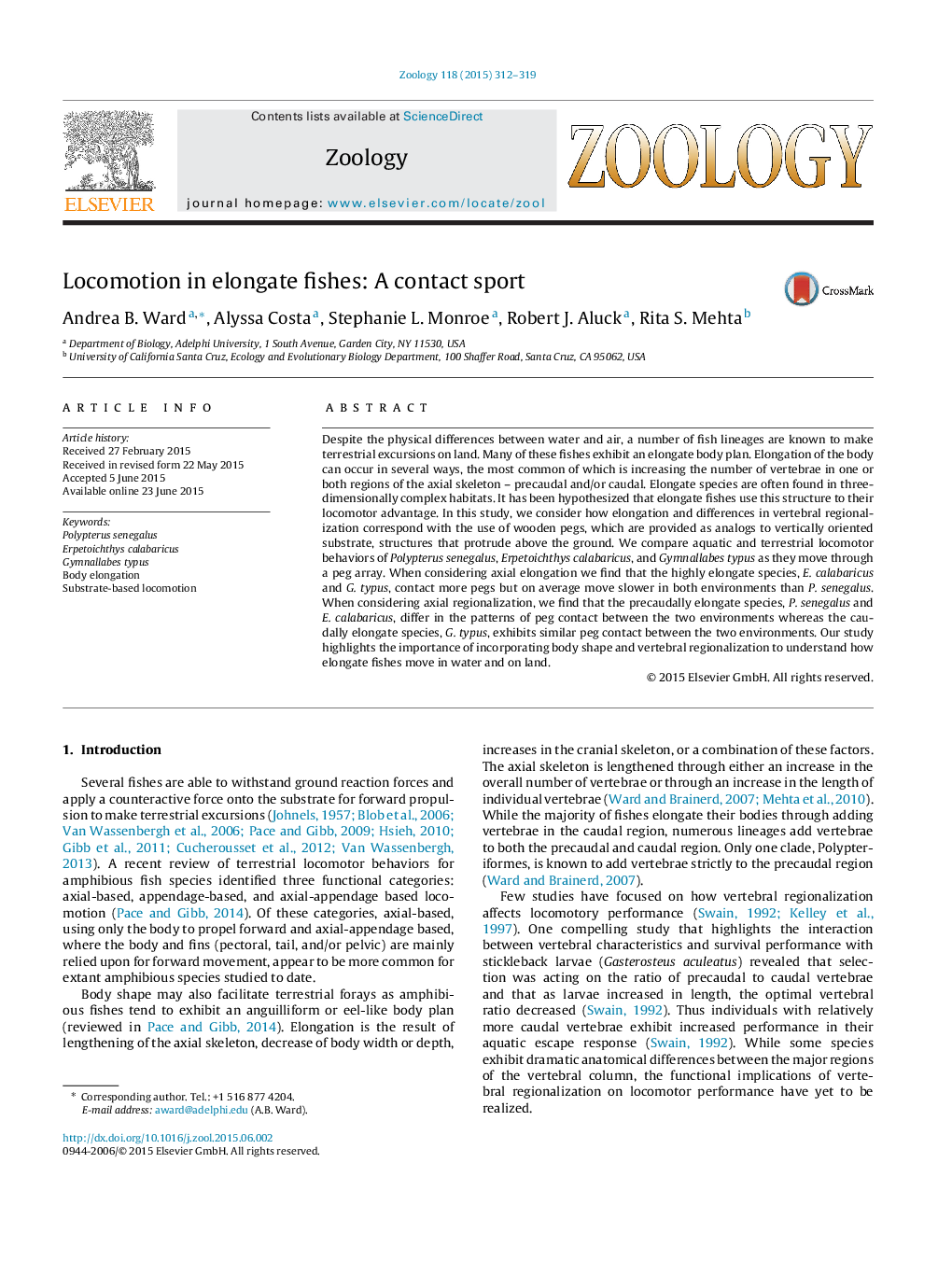| Article ID | Journal | Published Year | Pages | File Type |
|---|---|---|---|---|
| 2791059 | Zoology | 2015 | 8 Pages |
•We compare aquatic and terrestrial locomotor behaviors of three elongate fishes as they move through a peg array.•Highly elongate species contact more pegs and move slower in both environments.•Precaudally elongate species differ in the patterns of peg contact between the two environments.•The caudally elongate species exhibits similar peg contact between the two environments.
Despite the physical differences between water and air, a number of fish lineages are known to make terrestrial excursions on land. Many of these fishes exhibit an elongate body plan. Elongation of the body can occur in several ways, the most common of which is increasing the number of vertebrae in one or both regions of the axial skeleton – precaudal and/or caudal. Elongate species are often found in three-dimensionally complex habitats. It has been hypothesized that elongate fishes use this structure to their locomotor advantage. In this study, we consider how elongation and differences in vertebral regionalization correspond with the use of wooden pegs, which are provided as analogs to vertically oriented substrate, structures that protrude above the ground. We compare aquatic and terrestrial locomotor behaviors of Polypterus senegalus, Erpetoichthys calabaricus, and Gymnallabes typus as they move through a peg array. When considering axial elongation we find that the highly elongate species, E. calabaricus and G. typus, contact more pegs but on average move slower in both environments than P. senegalus. When considering axial regionalization, we find that the precaudally elongate species, P. senegalus and E. calabaricus, differ in the patterns of peg contact between the two environments whereas the caudally elongate species, G. typus, exhibits similar peg contact between the two environments. Our study highlights the importance of incorporating body shape and vertebral regionalization to understand how elongate fishes move in water and on land.
